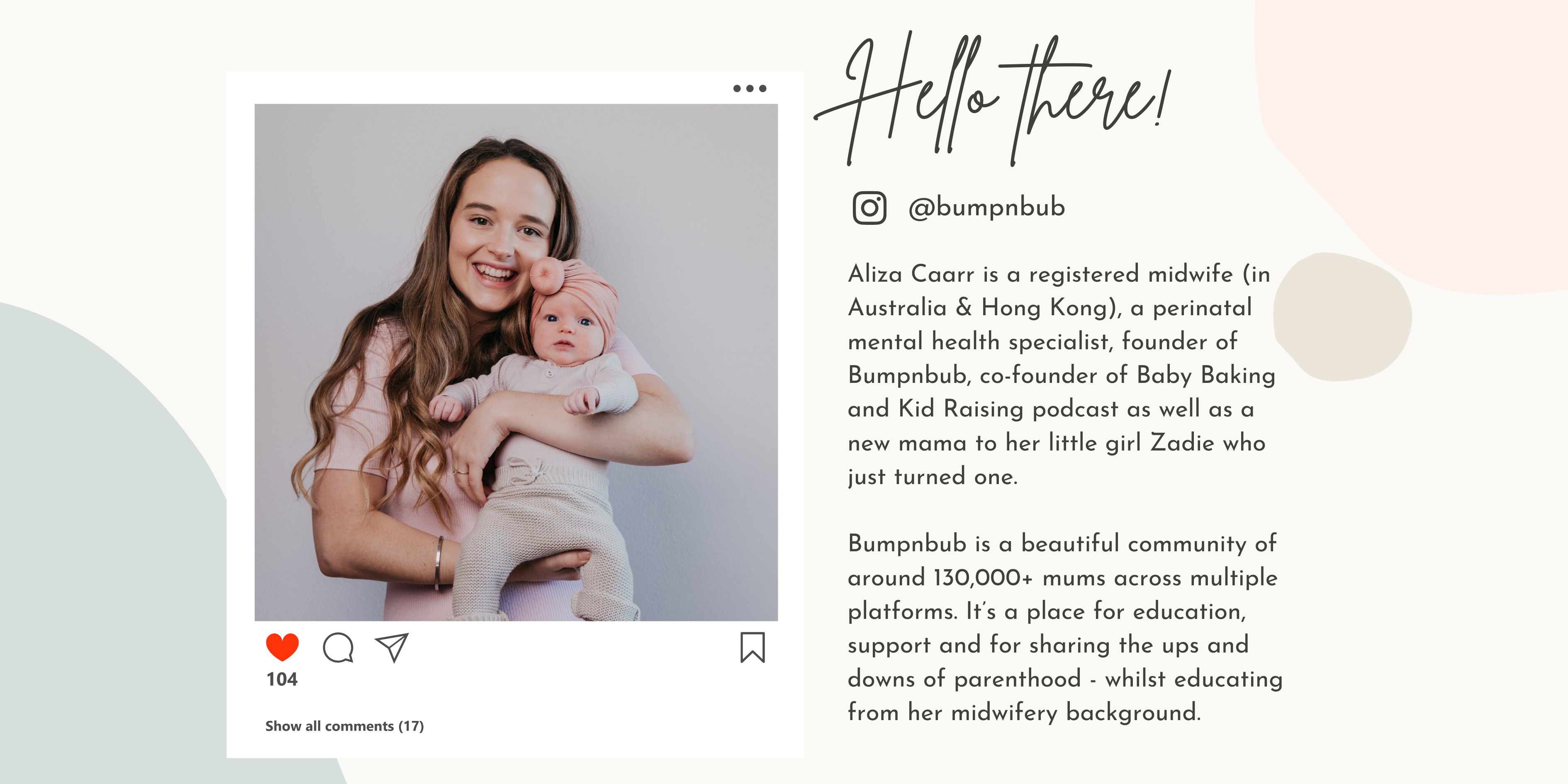Preparing For Your Breastfeeding Journey
You have just created, grown, and birthed your beautiful baby - and now you have to keep bub fed, and manage breastfeeding!? If you are like me, the thought is daunting and overwhelming. I wanted to share some simple ways you and your partner can prepare for a successful breastfeeding journey and to reassure you that there is plenty of support if you feel like things are getting tough. You and your baby are learning on the job, remember, it is a learnt skill not a natural skill for many mamas. You may experience some tough and overwhelming times during your breastfeeding journey, but preparing and informing yourself of the benefits, process and where to get support is the best thing you can do.
As for most big events in life, it is easier to prepare when you have prior knowledge and understanding.
The same goes for pregnancy, childbirth, and breastfeeding; antenatal education is the first step to prepare you and your partner. Australian Breastfeeding Association (ABA) encourages mama’s-to-be to learn about breastfeeding before your baby arrives, making you knowledgeable and empowered for when bub is born and more likely to identify any problems that may arise. Antenatal classes are also a great way to learn valuable information, and the ABA also runs a ‘Breastfeeding Education Class’ and support groups for pregnant and breastfeeding mamas. Being aware of where to find reliable resources is also important, the first place I suggest is the resources page in your pregnancy health record, or through your hospital’s website. Also discuss with your partner and those around you in the antenatal period that you want to breastfeed so they can support and encourage you, especially on those tough days. Often partners feel helpless in the early days when you are feeding bub a lot, so I encourage you and your partner to read ‘The Breastfeeding Partnership’ on the ABA website, which outlines how your partner can best support you while breastfeeding and feel included in the partnership of parenthood, to give you and your baby the best chance of breastfeeding as long as possible.
Tips for successful breastfeeding:
- Skin-to-skin contact immediately after birth and as much as possible
- Leave bub on your chest until after the first breastfeed pending you are both well
- Encourage breastfeeding on demand - it is so normal for your baby to cluster feed. Understanding normal feeding patterns at each age can provide reassurance to you and your partner
- Room in with your baby for the first 6 months (sleeping in the same room) and have a comfortable, supportive place to feed.
- Keep hydrated when breastfeeding; try my Motherhood Hydration Powder to keep you nourished and hydrated
- Ideally no dummies or teats until breastfeeding is established
- Accept support and seek assistance when you need. Lactation consultants are a wonderful first contact when you need guidance and assistance
- ‘Baby-led attachment’ or the ‘Thompson method’ are great tools to research
- A hospital that implements the Baby-Friendly Hospital Initiative (BFHI), and supports the World Health Organisation ‘10 steps to successful breastfeeding’. The BFHI is a global launch effort to protect, promote and support breastfeeding
The basics:
Colostrum is present in your breast from mid to late pregnancy and following birth for around 3 days. Your body produces more colostrum due to hormonal changes and your baby suckling at the breast, therefore frequent feeds lead to a quicker increase in milk supply and a fed happy bub. You can also research antenatal expressing of colostrum in preparation for breastfeeding. Mature breastmilk fills your breasts around day 3 or 4 (70-90 hours) after your baby is born, and your breasts will become very firm. You may then notice a change in your baby’s suck and swallow pattern while breastfeeding, baby will take deeper slower sucks and you may also hear gulping and swallowing of your milk! You may experience engorgement around this time when your breasts fill, use warm compresses and lots of massage before bub feeds.
Maintaining breastmilk supply is reliant on frequent suckling and removal of milk from the breast, as well as regulation of hormones (prolactin and oxytocin). Supply = demand: the amount of breastmilk that your body will produce is determined by how often your baby feeds and how much milk is removed from the breast. The more milk that is removed, the more that is produced, therefore you make exactly the right amount of milk for your baby and their appetite/needs.
One of the most common questions for breastfeeding mamas: ‘How do you know if my baby is getting enough breastmilk?’
When your baby is feeding at the breast, you cannot tell exactly how much milk they are consuming, therefore a lot of mamas worry or will be unsure if their baby is getting enough. Massaging or feeling the firmness of your breasts before and after your baby breastfeeds is one way you will be able to tell if they are draining the breast or not. If your breasts feel softer and emptied when bub is finished then you can be reassured they have had a good feed, if they still feel firm then re-offer bub the breast. Your baby should breastfeed 8-12 times (or more) every 24 hours, with frequent feeds and emptying of the breast resulting in more milk produced. There are 3 main ways that you and your midwife can tell if your baby is feeding well and consuming enough breastmilk. Always look at the whole picture when assessing if your baby has had enough; feed frequency, nappies, weight and behaviour.
- Output = number of wet & dirty nappies. Your baby’s wet nappies will indicate to you their hydration, especially in the early days before your milk comes in. The wet nappies should increase by 1 for every day of life, so on day 1 they will have 1 wet nappy, on day 2 they will have 2 wet nappies, on day 3 they will have 3 wet nappies and so forth until day 7, and from then onwards they should have 7 wet nappies every day. You also track the colour of bubs poo to determine their intake. On day 1 of life your baby’s poo will be a black tar-looking meconium, then as your breasts fill with milk on day 3 bubs stool should be greenish brown, then when by day 7 when your milk supply is increasing the stool should be a mustard yellow colour.
- Weight. All babies will lose weight by day 3 of life, no more than 10% of their birth weight. After this your breasts will begin to fill with milk, and if they have been feeding efficiently their weight will begin to increase. Bub should gain at least 150 grams per week and return to birth weight around day 14 of life, depending on how much weight they have lost on day 3. Frequent weight checks with your midwife, GP or child health nurse is recommended until 6 weeks of age, or as directed by your health care professional.
- Behaviour. Every baby is different in regard to the frequency and length they need to feed for to be satisfied. Looking at your baby’s cues as well as their behaviour can also be a great way to tell if bub is full and content. As you watch your baby you will learn their signs or cues of hunger, sleep and being full. If your baby is showing hunger cues, irritable, sucking their hand or not settling to sleep, they probably need another feed. A settled, relaxed and happy baby is generally a well-fed baby. Also trust your instincts mama.
What to do if you have concerns with breastfeeding: Always ask for help if you are having any troubles breastfeeding or need support. Lean on those around you that have breastfed before, or pick up the phone and call local child health nurse or ABA hotline. If you want an in-person consultation with a professional, a midwife or lactation consultant (LC) is the best person to see. If you need help in the early days and you are in hospital, press your call bell for your midwife to assist you on the postnatal ward. They will be able to check bub’s latch and provide practical assistance with breastfeeding. If you need further assistance, most hospitals have breastfeeding class you can attend or one on one consultations with an LC. If you have already been discharged from hospital, get in contact with a community midwife or LC that you can see.
What is an LC? A trained professional specializing in feeding support for families.
When to see an LC? If you need ANY help or support with breastfeeding; to increase your supply, manage pain difficulties when feeding, assess suck, swallow and breathing, as well as tongue function of your baby. You can even arrange to have an antenatal consult with an LC.
Where else can you access an LC? You can self-refer to any LC’s in the community; private LC’s, LC’s at your local child health clinic, as an outpatient at your local hospital, recommendations through your GP or other mamas and websites such as www.LCANZ.org
What are some other things that can help on this journey?
- A great breastfeeding chair - I recommend the amazing chairs from il Tutto. You will spend a lot of time sitting down, supporting your baby’s head and neck while feeding and being comfortable is key. Read more about Why Your Breastfeeding Chair is the Best Nursery Investment You'll Make here.
- Nourishing lactation cookies that are the perfect one-handed snack, loaded with beautiful quality ingredients from Franjo’s Kitchen.
- When you’re breastfeeding, plain old water just doesn’t cut it on the electrolytes scale, Franjo’s Kitchen’s Motherhood Hydration Powder is a healthy way to hydrate your hardworking body. With the delicious taste of Australian blood orange and hydrating powers of coconut water, it’ll turn your drink bottle into your bestie.
- Haakaa Ladybugs, perfect for catching leaking milk - and not wasting it!
- Plenty of cloths - leaking milk and baby vomit means an awful lot of mess. I like these ones from Kmart - cheap and they last
- Some comfortable maternity singlets, with built-in support - I found these held nursing pads far better
Key resources:
- Australian Breastfeeding Association (ABA) - great fact sheets on all topics, FAQs and a 24/7 hotline to call (1800 mum2mum)
- Raising Children’s Network
- Breastfeeding & Your Baby Booklet- find here
I hope these tips help you. Remember you are never alone on your breastfeeding or motherhood journey. This blog contains general advice only, and does not replace the need for medical advice.
Blog written by midwife Aliza Carr from Bumpnbub.

